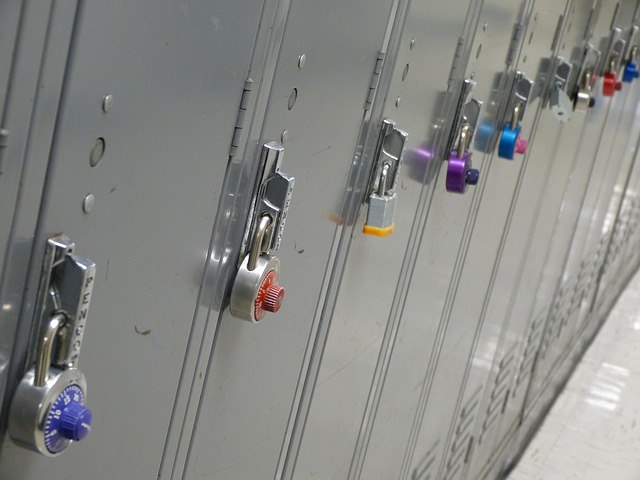The following resources focus on the educational climate and betterment of those serving the K–12 educational community.
CTE Classes Are Popular, but Only 25 Percent of Students Take Courses That Could Lead to the Nation’s Biggest Industries, New Study Finds The study also found that when local wages are higher in a specific industry, students are less likely to take courses related to that industry. (The 74)
State Board of Education Requests Money for Teacher Shortage Solutions The Illinois State Board of Education is requesting $2.4 million for competitive grants to support what state school Superintendent Carmen Ayala said are “innovative solutions” to teacher shortages. (The State Journal-Register)
RI School Safety Bill Proposes Creation of “Threat Assessment Teams” The threat assessment team would include the school psychologist, a social worker, the principal and other leaders, who would meet on a regular basis and discuss students whose behavior is concerning. (WPRI)
High School Doesn’t Have to Be Boring What would it take to transform high schools into more humanizing and intellectually vital places? The answer may lie not in core classes and traditional classroom formats, but in the rich and engaging dynamics more often found in electives like drama or debate. (The New York Times)
Putting ESSA’s Puzzle Together This Education Week special report offers a big-picture look at the state of play on Every Student Succeeds Act nationally, along with deeper dives into issues of school accountability, student assessment, data transparency, and school improvement.
Supporting Social, Emotional, & Academic Development This action guide provides school leadership teams with a resource for integrating the social, emotional and academic needs of young people into the daily student experience, from the time a bus driver greets a student until the end of the day. It supports the school leader and her/his team in mapping out an approach for integrating the social, emotional, and academic needs of students into the way adults and students experience school each moment of each school day.
How Do You Measure Social and Emotional Learning? In the education world, it is often said that what gets assessed gets addressed. Many educators have questions, though, about how to measure social and emotional learning topics. (The Hechinger Report)
Report: State’s Evidence-Based School Funding Model Working, Needs More Funding Center for Tax and Budget Accountability President Ralph Martire and state Rep. Will Davis, D-Chicago, discussed a report on Illinois’ evidence-based school funding model during a news conference Wednesday at the Capitol in Springfield. (Herald & Review)
Making Afterschool More than an Afterthought The Wallace Foundation talked to Ruth Neild, the lead author of a recent report finding more than 60 afterschool programs that meet the top three of four tiers of evidence required by the Every Student Succeeds Act to tap key federal funding streams. Neild says the researchers scoured the literature on “every afterschool program we could find” and reviewed the programs against ESSA standards so districts and providers can use the information. You can find more coverage of the report at the 74 Million and Youth Today.
State Responsibilities and Opportunities For School Improvement Under The Every Student Succeeds Act A new report by Policy Studies Associates commissioned by the Council of Chief State School Officers shows how state education agencies are implementing their vision for school improvement priorities under ESSA.
50-State Comparison: Arts Education Data Collection and Reporting
This new 50-state comparison assesses the capacity of all 50 states and the District of Columbia to aggregate and report on arts education data already housed in statewide education data systems. This resource is part of the State Data Infrastructure Project in the Arts, a partnership between the National Endowment for the Arts and Education Commission of the States to build states’ capacity to extract, analyze and report on data about arts education.
The Achievement Gap Fails to Close A half century of testing shows a persistent divide between haves and have-nots. Should we reconsider policies and practices that have been aimed at shrinking the gap? (Education Next)
Success Plans-Promising Tools for Customizing Student Supports and Opportunities One of the critical flaws in our school systems is that the architecture is based on a one-size fits all paradigm that doesn’t address the particular, complex, and varied needs of children living in poverty. The system doesn’t customize interventions or account for the special circumstances, assets, and challenges faced by individual children. This report by The Education Redesign Lab discusses how we can change that.
More Education Studies Look at Cost-Effectiveness Beginning this grant cycle, the federal Institute of Education Sciences formally required all future evaluation studies to analyze the costs to implement an intervention, including staff, training, equipment and materials, and other expenses, both at the start of and to maintain the programs over time. (Education Week)
The Rural Impact Hub invites you to join a webinar on Tuesday, April 16, that will unpack trends, successes, and failures in rural education. The digital “town-hall” style event will allow guests to interact with a panel of leading education experts who are ready to share best practices and greatest challenges when working in rural communities. Panelists include nationwide leading experts Maddie Fennell, John White, Ryan Ricenbaw, and Dan Hanson. Credentials of the speakers include Executive Director of the Nebraska State Education Association (Fennell), Chief Educator at Find Your Grind (Ricenbaw), former Deputy Assistant Secretary for Rural Outreach at the U.S. Department of Education (White), and the 33rd President of Peru State College (Hanson). Rural Impact Hub Founder and BCom Solutions CEO, Brent Comstock, will also join.

